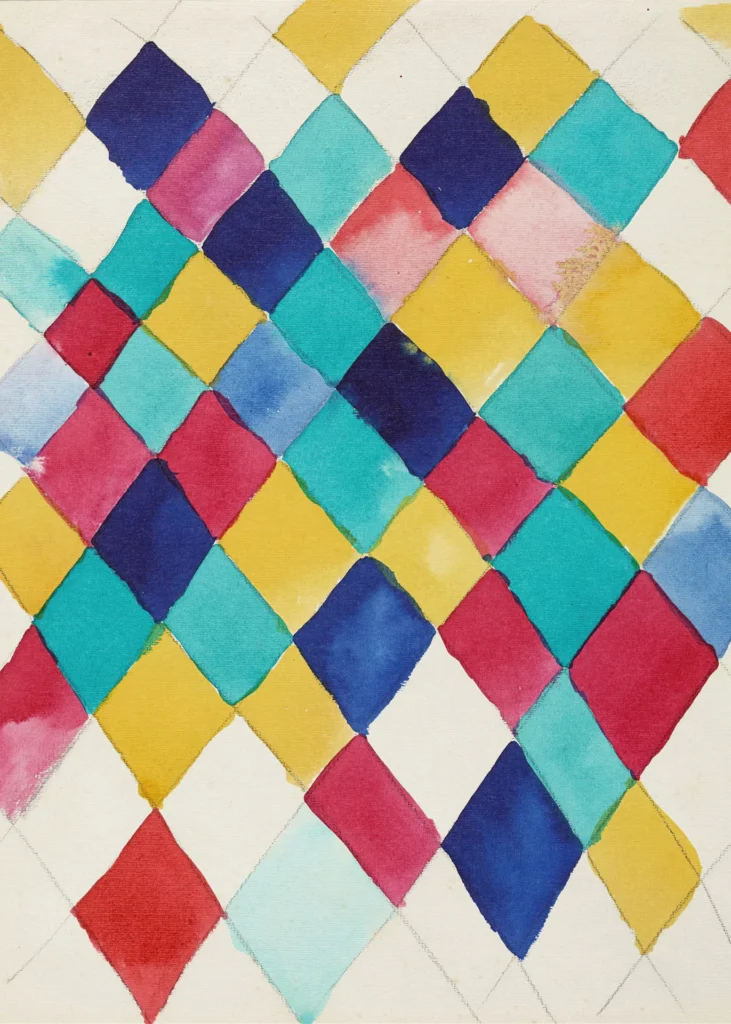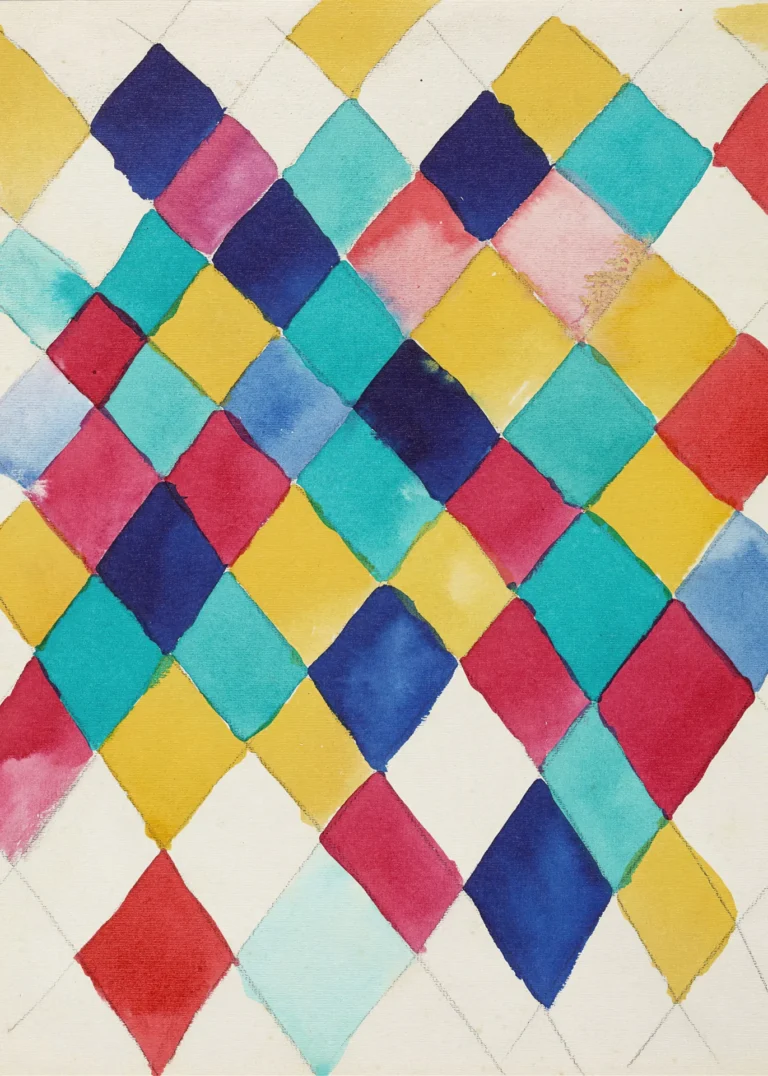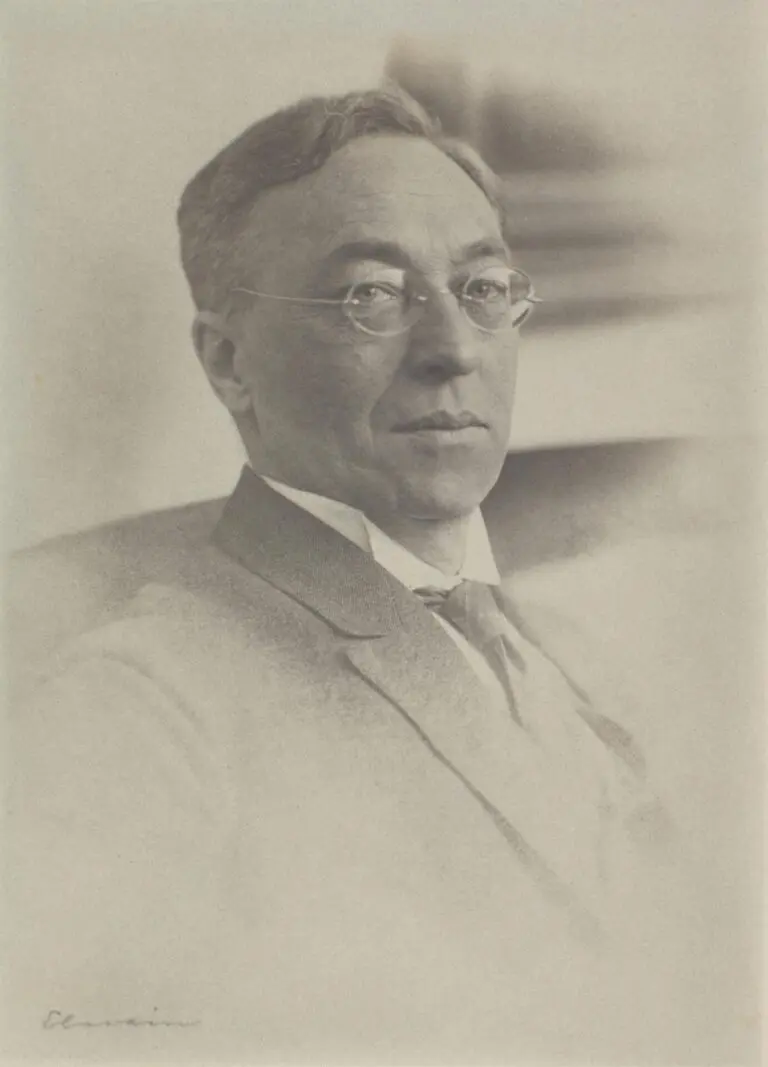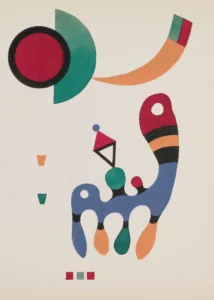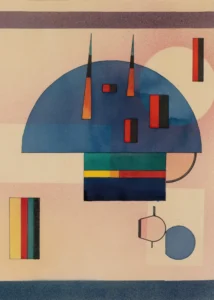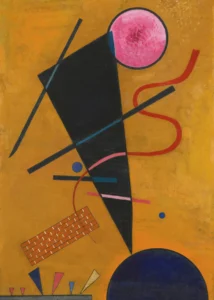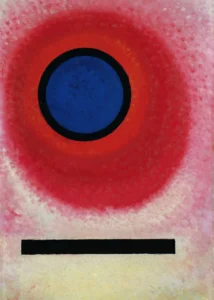Farbstudie mit Rauten (1913)
Wassily Kandinsky's Farbstudie mit Rauten. created in 1913, is a captivating study in abstract art that showcases his visionary use of geometric shapes—specifically chequers or diamonds—blended with a dynamic color palette. This significant work highlights Kandinsky's pioneering spirit in the realm of emotional expression through color, embodying the essence of his artistic philosophy that connects visual art to spirituality. Often reproduced on canvas and mixed media, it appeals to modern art lovers and collectors alike.
Year 1913
About the Artwork
The story of Farbstudie mit Rauten is deeply intertwined with Wassily Kandinsky's artistic evolution and his quest for abstraction. In the early 20th century, Kandinsky sought to transcend traditional representations of reality and engage with the emotional resonance of colors and forms. This work represents a pivotal moment where he began to break free from the representational constraints of his earlier artistic endeavors. The use of diamonds and vibrant colors reflects his interest in the spiritual and emotional responses elicited by visual stimuli. This piece stands as a testament to his influence on the development of abstract art, a movement that would resonate throughout the 20th century and beyond.
Did You Know
Liked what you see? Add it to your collection.
Enjoyed reading? Share it.
... continued
Artist and Context
Wassily Kandinsky is widely regarded as the pioneer of abstract art, and Farbstudie mit Rauten is one of his early works in this genre.
Technique and Medium
The artwork is characterized by its use of geometric shapes, particularly chequers or diamonds, and vibrant colors. While the original medium is not specified in the sources, Kandinsky often experimented with various techniques, including watercolors and mixed media.
Significance
Farbstudie mit Rauten reflects Kandinsky's interest in the emotional and expressive qualities of color and form. It is part of his broader exploration into the abstract and the spiritual in art, which was a central theme in his work during this period.




